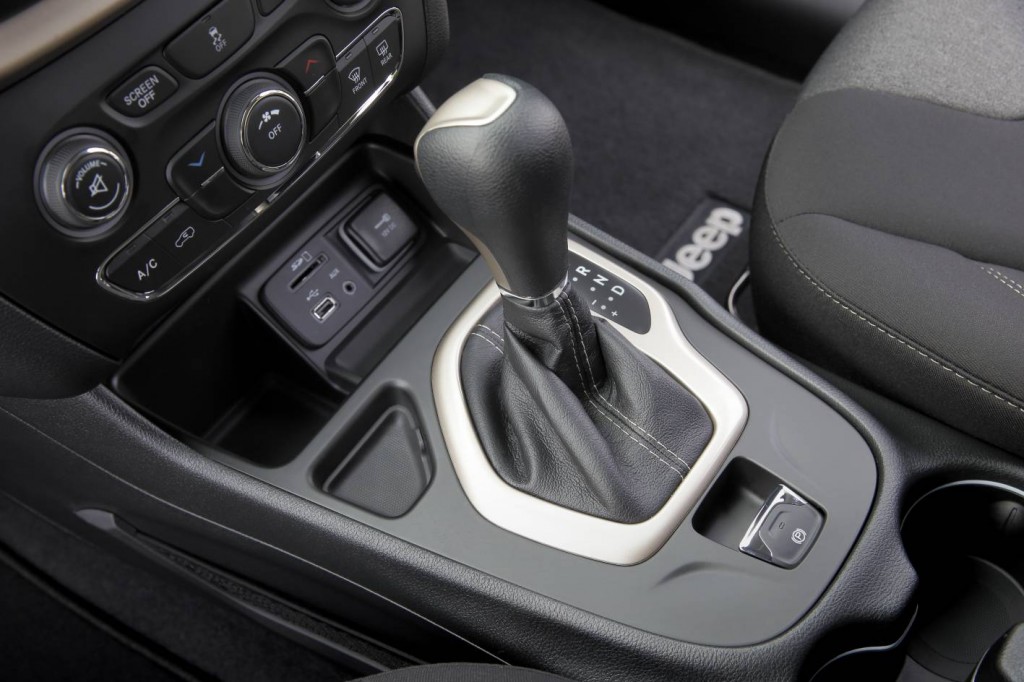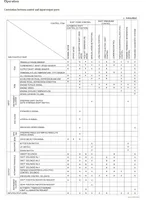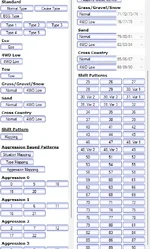You are using an out of date browser. It may not display this or other websites correctly.
You should upgrade or use an alternative browser.
You should upgrade or use an alternative browser.
2022 CX-5 Adaptive AT?
- Thread starter erhayes
- Start date
Yes, all the Skyactiv drive transmissions are highly adaptive. They constantly monitor your driving habits and clutch apply times, pressures, etc and tailor the operation around that.
What style can it determine if multiple people drive a car? The missus's driving style is different from mine so the system must wonder why sometimes it is driven harder [e.g. more aggressive acceleration/braking] than others [using it for a gentle coast to/from shops]
- :
- 2022 CX-5 Turbo
Hard to say. It depends on the algorithm used by Mazda. Total average of past driving or weighted average, more on recent driving.What style can it determine if multiple people drive a car? The missus's driving style is different from mine so the system must wonder why sometimes it is driven harder [e.g. more aggressive acceleration/braking] than others [using it for a gentle coast to/from shops]
1
181962
I would like to see where Mazda ever said a CX-5 will adapt to a driving style, transmission or otherwise, other than the 200 checks per second to adapt in the moment. I have great skepticism that it remembers what I did yesterday or a minute before.
Its common for modern transmissions 2010+ to have this ability. A battery reset will erase the most current learned behavior but not the deeper learned behavior that is stored in the TCM and is protected from a battery reset. To fully erase the info you need to clear the shift adapts. This clears all learned behavior and internal clearances readings, clutch apply times, TCC lockup aggressiveness, etc. It then goes into a learning state that lasts around 100 miles. We run into this often in transmission repair. Someone picks up a car, drives it gingerly for awhile, someone else gets into and complains about shift feel. Reset the adapts and send them on their way for the car to learn the behavior. It then uses these inputs to make decisions 100s of times per second.
Attachments
1
181962
Been there, done that, when disconnecting the battery for two months while snow birding. I detected no difference.If you disconnect the 12-volt battery to reset the AT to the factory default values, you will quickly see the difference between the "learned" and default values. That result by itself suggest strongly that the transmission learns. Ed
Whatever non-momentary adjustments that accumulate over time are very subtle. Momentary adjustments to the circumstances are more the order of the day. If non-momentary adjustments were anything but subtle and momentary you'd notice a difference when driving locally all week in a commute and then going on a back road trip over the weekend, then back to commuting--performance whipsaw. You don't have to go so far as to contemplate the affect of different drivers--situationally a single driver employs different driving styles as circumstances dictate.
The following is a more accurate representation of what's going on and it is not unique to Jeep or any maker:

Does an adaptive gearbox really learn how you drive? | Practical Motoring
Plenty of people believe an adaptive gearbox can learn the way you drive, and it does but it's not quite as cut and dried as all that.
 practicalmotoring.com.au
practicalmotoring.com.au
Now, performance adjustments should be expected with trans wear over time or antique fluid just as the ECU will adjust EFI with age and crud accumulation as engine controls have been doing since forever.
Once upon a time, and perhaps still with some vehicles, these "deeper learned behaviors" referenced by @sinistriel@ were lost when disconnecting the battery. It would stand to reason, with respect to my Mazda anyway, that if they went to the trouble of saving my radio station pre-sets in non-volatile memory (retained without battery power) they would do the same with the more critical engine and trans performance settings.
Last edited by a moderator:
1
181962
There was a transmission repair. One would expect a very different feel after the fact compared to when it was operative but on the brink of failure with those "deep learned" performance settings. I see it as a case of the second driver having been accustomed to how it was performing before it failed. Even if it is now operating more optimally, some folks don't like their cheese moved. That's the more plausible explanation than somebody having else having driven it 100 miles.We run into this often in transmission repair. Someone picks up a car, drives it gingerly for awhile, someone else gets into and complains about shift feel.
I'm aware of what the automakers say. Even terms like "deep learning" suggest some sophisticated AI which should be reserved for supercomputer applications and still I tend to blanch at the term "intelligence". More to the point, some makes say it takes 90 days or a couple thousand miles to fully learn your "style". The odd and obvious thing about that is a typical driver does not have one driving style--you can go on a frisky weekend drive one day and get bogged down in rush hour traffic the next. Whatever adjustments are made end up being a kind of averaging out, a lot more subtle than one would be led to believe. Perhaps if the only thing you did with the vehicle was trailer it and race it or only slog short distances over and over again for an extended period something quite noticeable might emerge.
Last edited by a moderator:
I do drivetrain R&D and tuning for a living. I see daily what happens with the actual programming from a variety of OEM manufacturers and suppliers. The Skyactiv Drive family is one of my all time favorite units and I am heavily invested in its future. In the next few months with new software on the market it will be much easier to show what is going on inside the TCM on the Mazdas in particular. Many transmission family's quite literally learn. One example on the market right now are the ZF 8/9 speeds that Chrysler uses. They have 90+ default maps that it can choose from on any given time and then applies a neural network that is trained from the factory to literally learn behavior of the driver. The network learns within set parameters and is constantly changing, with the right equipment you can watch it. Its a fascinating process. Screenshot is from a Hellcat I'm currently working on.
Attachments
HyFlyer
2019 CX5 sig 2.2 diesel / 2016.5 CX5 touring 2.5na
- :
- Southwest Ohio
Lol .... On one hand, we've got a 1st person industry insider who does drivetrain R&D and tuning professionally -vs- Googling a web page from Australia on the internets (which may be 100% accurate I have no idea)
My money's on 1st hand professional knowledge guy

I'm enjoying the thread and learning new stuff.
My money's on 1st hand professional knowledge guy
I'm enjoying the thread and learning new stuff.
Last edited:
That's the neat thing about the internet. I could be making everything up. On the other hand I was the first person to drop a smidgen of the new technical info about the 8 speed rwd trans in my other threads. I'll leave it up to you guys to figure that out.
1
181962
On the other hand we have a driver of a 2020 CX-5 NA vehicle and others who say otherwise from personal observation. I'm not alone. There are plenty more links that would agree. When somebody says 1000% it strikes me they have something to prove.Lol .... On one hand, we've got a 1st person industry insider who does drivetrain R&D and tuning professionally -vs- Googling a web page from Australia on the internets (which may be 1000% accurate I have no idea)
My money's on 1st hand professional knowledge guy
I'm enjoying the thread and learning new stuff.
On it's face, saying 100 miles of driving will reset the transmission based on driving style is on its face far fetched, not credible. It would be stupid to do so.
1
181962
The chart attached to your post demonstrates nothing regarding the issue at hand, nor does the pervious chart you posted. That shifting will vary based on conditions or driving style in the moment is not being debated. The charts say nothing about cumulative adjustments for driving style. For the typical driver there is no consistent driving style not to mention, again, a vehicle regularly driven by multiple drivers.I do drivetrain R&D and tuning for a living. I see daily what happens with the actual programming from a variety of OEM manufacturers and suppliers. The Skyactiv Drive family is one of my all time favorite units and I am heavily invested in its future. In the next few months with new software on the market it will be much easier to show what is going on inside the TCM on the Mazdas in particular. Many transmission family's quite literally learn. One example on the market right now are the ZF 8/9 speeds that Chrysler uses. They have 90+ default maps that it can choose from on any given time and then applies a neural network that is trained from the factory to literally learn behavior of the driver. The network learns within set parameters and is constantly changing, with the right equipment you can watch it. Its a fascinating process. Screenshot is from a Hellcat I'm currently working on.
Last edited by a moderator:
I could post things like that but then I'd be breaking NDAs and is one of the reasons most industry insiders don't post. Its hard to prove what you can't legally talk about it. The ZF AI in particular assigns aggression markers to who is driving because of things it remembers. I know you won't believe me and that's fine. I'll continue on my day. Regardless there is a huge consistency to how people drive and a lot of interesting science behind it. Ill post when I can with what I can. My inbox is always open if people want to ask questions.
1
181962
I'd like to see that science. Common sense says there is great variability in driving--the route, the traffic, driver disposition, from one minute, hour or day to the next.Regardless there is a huge consistency to how people drive and a lot of interesting science behind it. Ill post when I can with what I can.
Similar Threads and Articles
- Replies
- 6
- Views
- 1K
New Posts and Comments
- Replies
- 53
- Views
- 32K
- Replies
- 11
- Views
- 304
- Replies
- 17
- Views
- 11K


